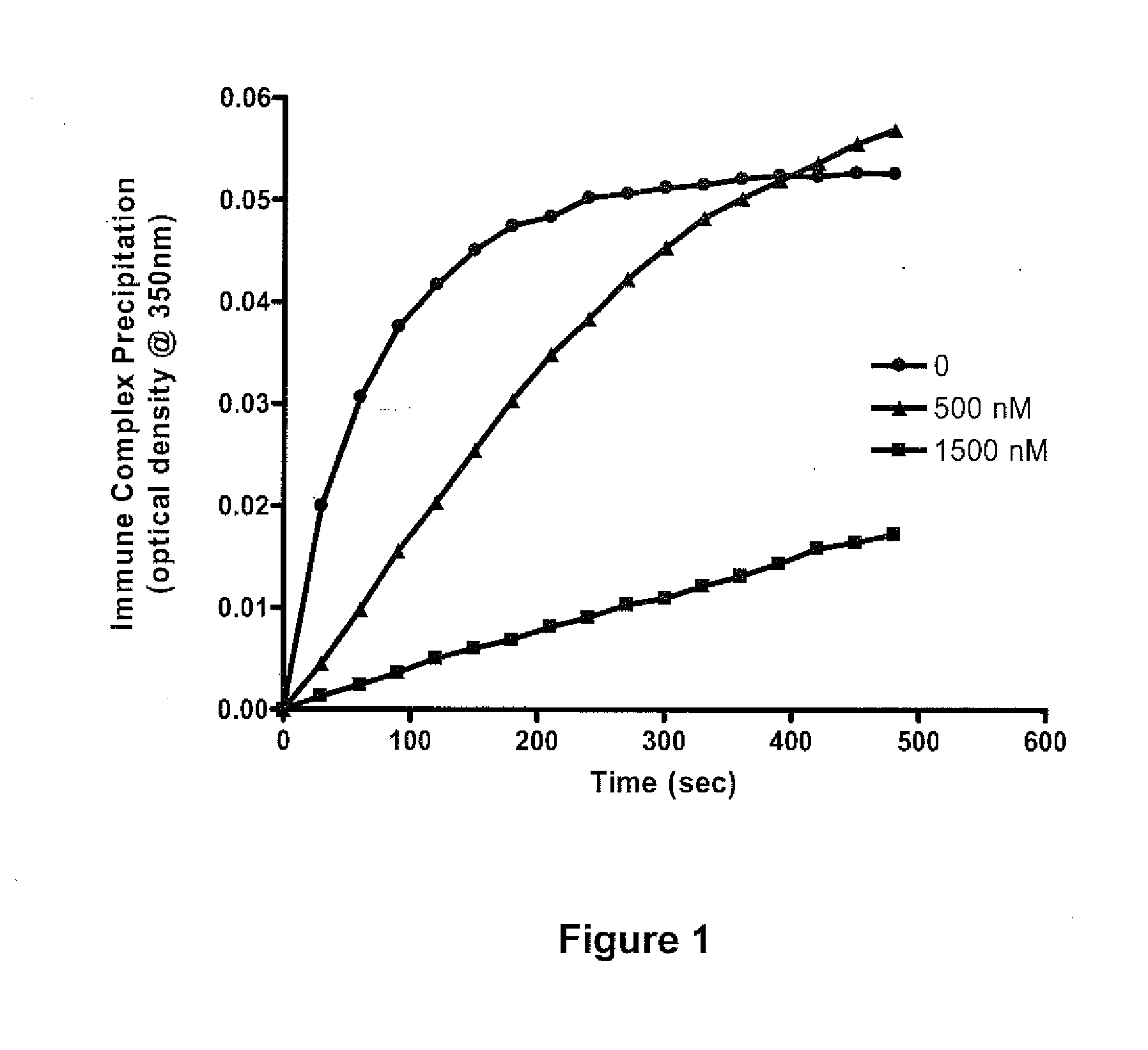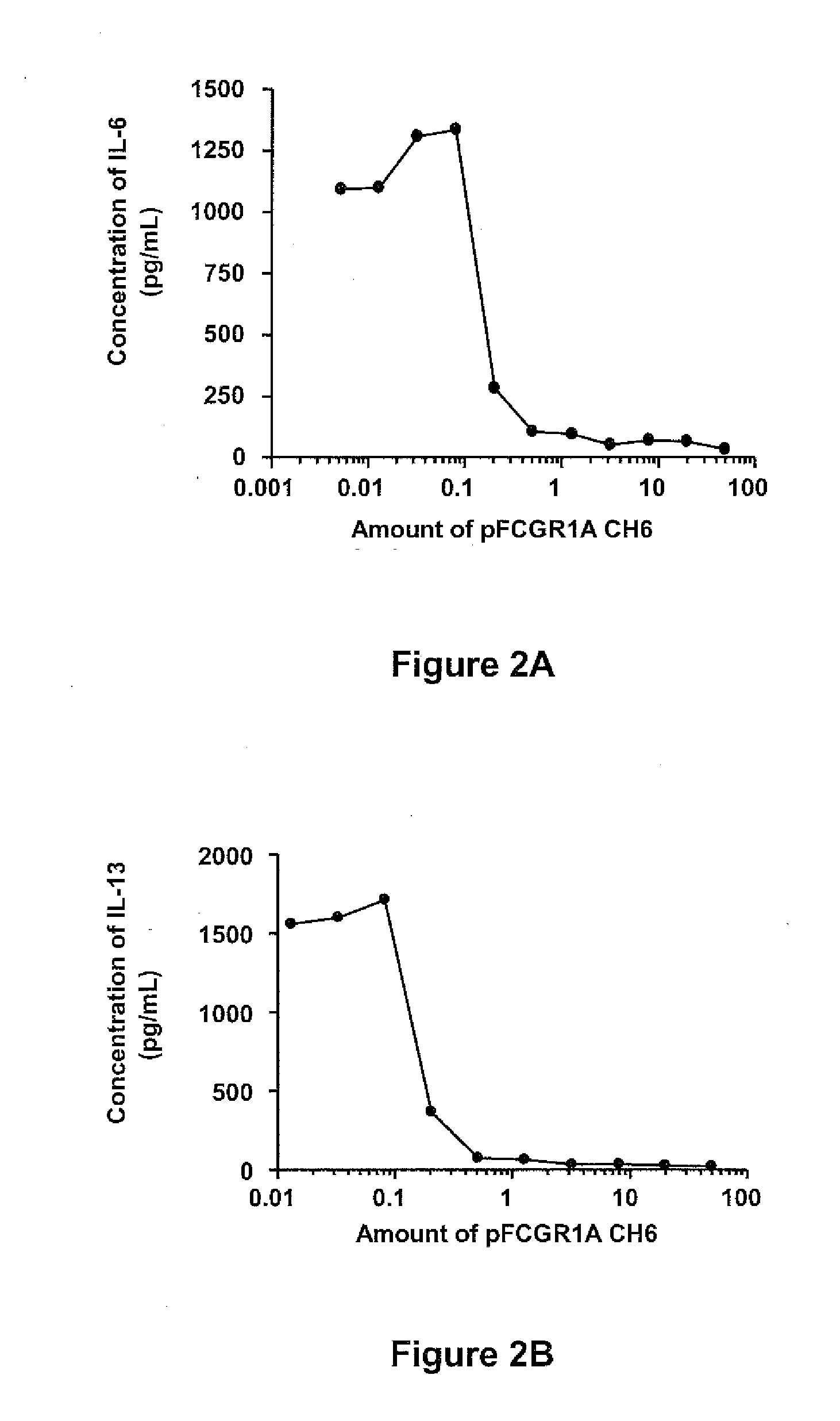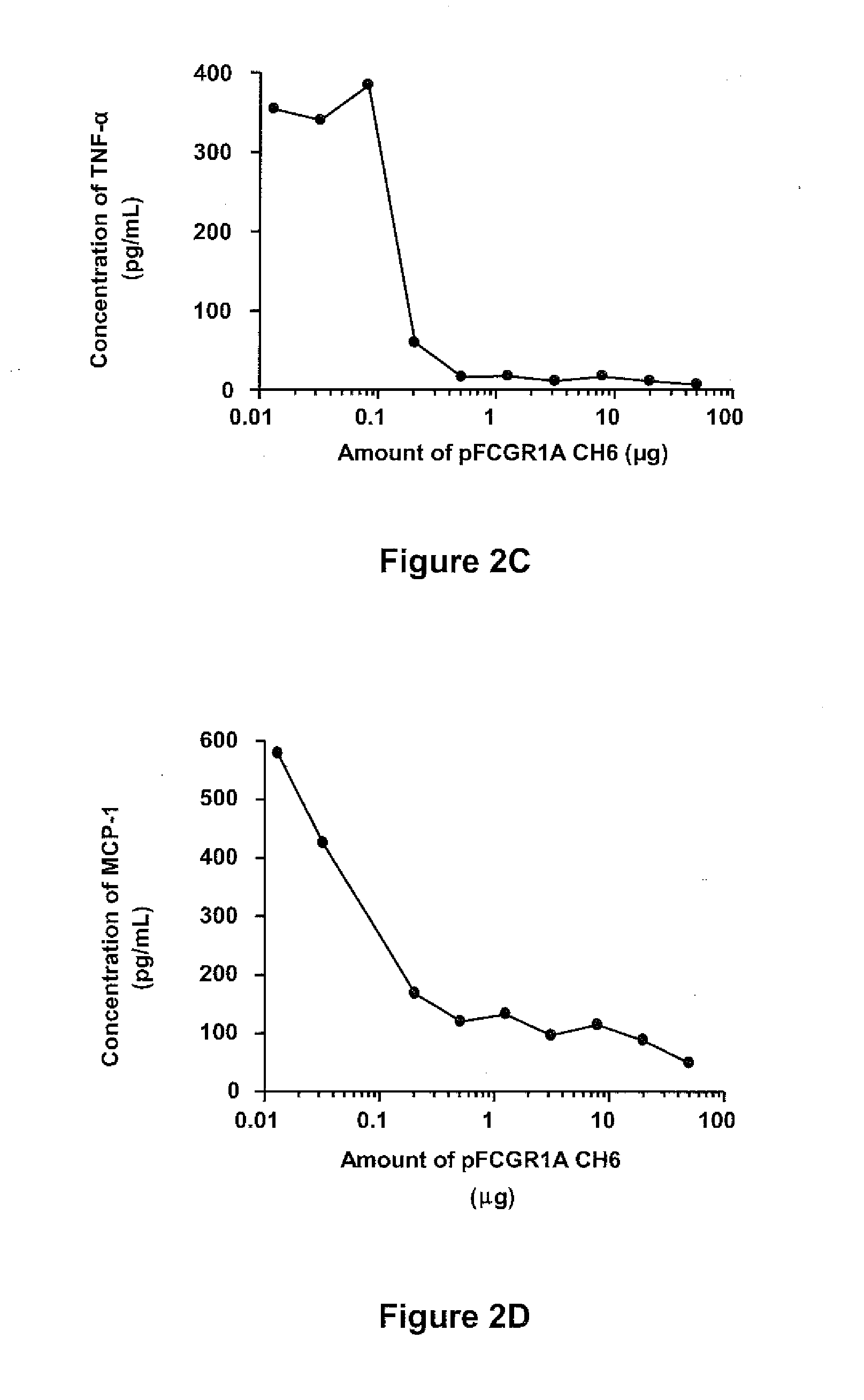Soluble hybrid fcgamma receptors and related methods
a technology of soluble hybrid fcgamma receptor and soluble fcgamma, which is applied in the direction of peptides, drug compositions, immunological disorders, etc., can solve the problems of limited clinical utility, significant health care problems of immune system diseases, and patients being significantly exposed to infection and cancer risks
- Summary
- Abstract
- Description
- Claims
- Application Information
AI Technical Summary
Benefits of technology
Problems solved by technology
Method used
Image
Examples
example 1
[0243]Construction of Mammalian Soluble FcγRIA Expression Constructs that Express FcγRIA-CEE, FcγRIA-CIIS, and FcγRIA-CFLAG Tagged Proteins
[0244]An expression construct containing the extracellular domain of human FcγRIA with a C-terminal tag, either Glu-Glu (CEE), six His (CHIS), or FLAG (CFLAG), is constructed via PCR and homologous recombination using a DNA fragment encoding FcγRIA (SEQ ID NO:14) and the expression vector pZMP20.
[0245]The PCR fragment encoding FcγRIA-CEE contains a 5′ overlap with the pZMP20 vector sequence in the 5′ non-translated region, an FcγRIA extracellular domain coding region portion of SEQ ID NO:14 (nucleotides 1-846), the Glu-Glu tag (Glu Glu Tyr Met Pro Met Glu; SEQ ID NO:15) coding sequence, and a 3′ overlap with the pZMP20 vector in the poliovirus internal ribosome entry site region. The PCR amplification reaction uses the 5′ oligonucleotide “100” (ACAGGTGTCCAGGGAATTCATATAGGCCGGCCACCATGTGGTTCTTGACAACTCTG; SEQ ID NO:16), the 3′ oligonucleotide “200” (...
example 2
Transfection and Expression of Soluble FcγRIA Receptor Expression Constructs that Express the FcγRIA-CEE, FcγRIA-CHIS, and FcγRIA-CFLAG C-Terminal Tagged Proteins
[0252]Three sets of 200 μg of each of the soluble FcγRIA tagged expression constructs are separately digested with 200 units of PvuI at 37° C. for three hours, precipitated with isopropyl alcohol, and centrifuged in a 1.5 mL microfuge tube. The supernatant is decanted off the pellet, and the pellet is washed with 1 mL of 70% ethanol and allowed to incubate for 5 minutes at room temperature. The tube is spun in a microfuge for 10 minutes at 14,000 RPM and the supernatant is decanted off the pellet. The pellet is then resuspended in 750 μl of CHO cell tissue culture medium in a sterile environment, allowed to incubate at 60° C. for 30 minutes, and is allowed to cool to room temperature. Approximately 5×106 CHO cells are pelleted in each of three tubes and are resuspended using the DNA-medium solution. The DNA / cell mixtures ar...
example 3
Purification of FcγRIA-CH6
[0254]An expression construct containing the extracellular domain of human FcγRIA with a C-terminal six His (CHIS) tag was constructed as described in Example 1, supra. This construct was transfected into and expressed in CHO cells as described in Example 2, supra. The encoded His-tagged FcγRIA, referred to in the Examples above as “FcγRIA-CHIS,” is also referred to herein as “FcγRIA-CH6” or “pFCGR1A CH6.” The nucleotide coding sequence for FcγRIA-CH6 is shown in SEQ ID NO:22, and the corresponding FcγRIA-CH6 amino acid sequence is shown in SEQ ID NO:23. The expressed FcγRIA-CH6 was purified as described below. FcγRIA-CH6 was purified from CHO conditioned media by a combination of Ni IMAC capture, chromatography on Q Sepharose, and size exclusion chromatography on Superdex 200. Ni IMAC capture: CHO conditioned media was sterile filtered (0.22 μm) and concentrated 10× using a peristaltic pump system equipped with 10 kD MWCO 0.1 m2 membrane. Concentrated medi...
PUM
 Login to View More
Login to View More Abstract
Description
Claims
Application Information
 Login to View More
Login to View More - R&D
- Intellectual Property
- Life Sciences
- Materials
- Tech Scout
- Unparalleled Data Quality
- Higher Quality Content
- 60% Fewer Hallucinations
Browse by: Latest US Patents, China's latest patents, Technical Efficacy Thesaurus, Application Domain, Technology Topic, Popular Technical Reports.
© 2025 PatSnap. All rights reserved.Legal|Privacy policy|Modern Slavery Act Transparency Statement|Sitemap|About US| Contact US: help@patsnap.com



